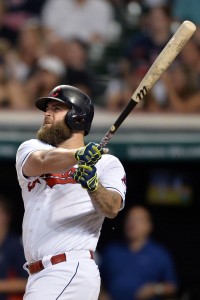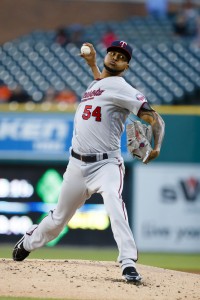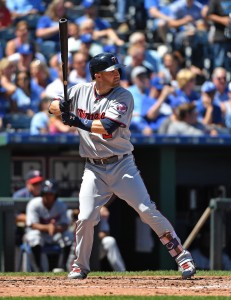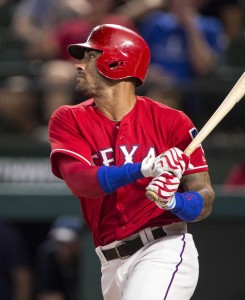MLBTR is publishing Offseason Outlooks for all 30 teams. Click here for the other entries in this series.
For the first time in a while, perhaps, the Rockies have more answers than questions on their roster heading into 2017. But plenty of needs remain to be addressed if the team hopes to break a string of six-straight losing campaigns — let alone crack the postseason for the first time since 2009.
Guaranteed Contracts
- Carlos Gonzalez, OF: $20MM through 2017
- Gerardo Parra, OF: $19.5MM through 2018 (includes buyout of 2019 club option)
- Adam Ottavino, RP: $9.1MM through 2018
- Jason Motte, RP: $5MM through 2017
- DJ LeMahieu, 2B: $4.8MM through 2017 (arb eligible in 2018)
- Chad Qualls, RP: $3.25MM through 2017
Arbitration Eligible Players (service time in parentheses; link to MLBTR projections)
- Jake McGee (5.127) – $6.1MM
- Tyler Chatwood (5.039) – $4.8MM
- Jordan Lyles (5.021) – $3.3MM
- Charlie Blackmon (4.102) – $9.0MM
- Nolan Arenado (3.155) – $13.1MM
- Non-tender candidates: McGee, Lyles
Other Salary Obligations
- Jose Reyes: $26MM through 2018
Free Agents
Rockies Depth Chart; Rockies Payroll Information
Pitching is always the great question in Colorado. The thin air of Coors Field poses a unique challenge, and the organization has yet to find a systematic means of dealing with that problem.
While altitude-master Jorge De La Rosa is finally moving on, though, the organization finds itself with a reasonably promising array of starters entering the winter. At the top of the list is Jon Gray, who made good on his billing (and draft status) with 168 solid frames in his first full season in the majors. Tyler Anderson showed well in his debut year, and the still-youthful Tyler Chatwood bounced back nicely from Tommy John surgery. While Chad Bettis wasn’t quite a good in the earned run department as he was in his surprising 2015 season, he still profiles as a sturdy rotation piece after providing 186 frames.
Having four bona fide starters isn’t enough, of course, but the Rockies have some other internal options. Jeff Hoffman — the top prospect acquired in the Troy Tulowitzki deal — comes with some upside. Another first-round arm, lefty Kyle Freeland, reached Triple-A last year and may soon be ready for a chance at the bigs. German Marquez also briefly touched the majors last year after an impressive run in the upper minors, though he’s still just 21 years old. The club could still give a shot to Jordan Lyles, if he’s tendered; though he’s coming off of a rough year, and has dealt with injuries, he’s not far removed from a promising 2014 season in which he recorded a 4.33 ERA over 22 starts. And Eddie Butler has always been seen as having plenty of talent, so it would be unwise to rule him out as an option if he can get back on track early in 2017.
Still, there’s plenty of reason to believe that GM Jeff Bridich should search for a way to bolster that unit. Top-tier free agent starters and those seeking a place to re-launch their careers are generally unwilling to go to Colorado, at least absent a substantial overpay, so that’s an unlikely course. Bridich has utilized the open market previously, signing Kyle Kendrick to an ill-fated, $5.5MM pact before the 2015 season, so he could still look to fill some innings that way. Otherwise, the Rox could look to the trade market to obtain a reliable arm.
The same general calculus holds true in the bullpen, where there’s an even more apparent need for improvement. Colorado will hope that its investments in Jason Motte and Chad Qualls look better at the end of next season than they do at present. While Boone Logan finally contributed in the third year of his own free agent contract, he’s now back on the market. Last winter’s major trade acquisition, lefty Jake McGee, will need to reverse his plummeting velocity and strikeout numbers.
There’s some hope, at least, that the Rockies will get more out of Motte, Qualls, and especially McGee in 2017. But the real cause for optimism lies elsewhere in the pen. Adam Ottavino picked up where he left off when he underwent Tommy John surgery, and seems to have the inside track on the closer’s role. Carlos Estevez faded after taking over the ninth last year, but he has a big heater and generated 9.7 K/9 over his first 55 major league frames. And southpaw Chris Rusin, who flamed out as a starter, thrived in a bullpen role, working to a 2.58 ERA with a 41:8 K/BB ratio in his 45 1/3 relief innings.
That gives Colorado six rather clear pen options, with any of the above-noted starting candidates also representing plausible relievers depending upon how things shake out. There are a few others who could be considered, too, including young righty Miguel Castro. But as with the rotation, the addition of at least one sturdy arm would seem to make quite a bit of sense. Bridich has suggested that finding impact arms will be a key focus, though as he admits, it may require a calculated roll of the dice to get something done.
Indeed, beyond the problem of marketing the game’s worst home pitching environment, the Rockies have another potential limitation at play. The organization is fresh off of a season in which it carried a team-record $112MM payroll, and is already in for $66MM for the coming year, with an estimated $36.3MM in arbitration payouts still to be accounted for (as well as a host of league-minimum salaries to fill out the roster). While non-tendering Lyles or even McGee could free up some cash, it would also mean shedding depth. Owner Dick Monfort has said that the organization will set another record in salary in 2017, but it’s not clear whether that will represent a significant increase over last year’s number. If not, there’ll be some tough decisions to make.
The obvious question is whether the Rockies will consider dealing from their stock of left-handed-hitting outfielders to facilitate the acquisition of players that could help elsewhere. Center fielder Charlie Blackmon is the team’s best trade piece, as he’s still reasonably priced, is controlled for two more years, and is coming off of an outstanding all-around campaign. He’d be the type of piece that might bring back a truly high-quality rotation piece, and could be replaced up the middle by David Dahl, who was excellent in his debut last year.
Still, parting with Blackmon would mean giving up one of the club’s best all-around players and relying heavily on Dahl. And depending upon the return, it might not do much to change the financial picture. Shedding some of the obligation owed to Gerardo Parra would obviously make sense to Colorado after his ugly and injury-riddled first year with the team, but they’d be selling low and might not find a willing slate of buyers.
Instead, it may finally make sense for the organization to pursue a deal involving star Carlos Gonzalez. He’s owed a cool $20MM — over a sixth of the team’s current projected payroll — in the final year of his deal. Though he has finally been healthy for two consecutive seasons, and has knocked 65 homers since the start of 2015, his overall production at the plate of late has been more solid than great. And the recent iteration of Gonzalez doesn’t draw above-average reviews from metrics with the glove or on the bases. It’s unlikely at this point that a rival organization would give up a major haul of prospects to add the 31-year-old, but shaving his salary off of the books — and possibly picking up a solid arm in the process — might be a way to gain some breathing room without really harming the team’s immediate outlook.
Gonzalez says he’s open to an extension (though there’s no evidence of talks), and would even be okay with moving to first if that’s what’s needed, but it’s far from clear that the Rockies would be best off with all four southpaw swingers on the roster. In fact, the team even has two other possible lefty outfield options on hand in Jordan Patterson and Raimel Tapia, both of whom hit well in the upper minors and briefly reached the bigs last year. As things stand, Colorado would still be in need of a quality right-handed bat to utilize in the outfield, if not also at first, and there wouldn’t appear to be much cash to work with.
If one of the three veteran outfielders ends up being traded, the remaining needs would be fairly evident. The left side of the infield is stocked with superstar Nolan Arenado and slugging shortstop Trevor Story, who’ll be looking to build off of an impressive rookie year that was cut short due to injury. DJ LeMahieu has established himself as a high-quality, everyday second baseman. And there are at least two plausible, albeit uncertain, options on hand both behind the dish (Tony Wolters and Tom Murphy) for the open utility infield role (Christian Adames and Pat Valaika).
The biggest hole is at first, and that’s also perhaps the spot that the Rockies could target for a value bet in free agency. That’s just what Colorado did last year in signing veteran slugger Mark Reynolds, with somewhat middling results. Given the lefty-leaning nature of the outfield, a righty bat would likely make the most sense. Mark Trumbo could conceivably be a target, though it would be surprising to see the Rockies spend that big — particularly on a hitter whose power masks a questionable all-around offensive profile. A lengthy commitment also wouldn’t be preferable; top prospect Ryan McMahon hasn’t yet mastered Double-A, but he could be an option in the corner infield in the near future. Looking at shorter-term possibilities, there’s wide interest in Mike Napoli, but he could be a match. Better bang for the buck might be found with a player such as Steve Pearce or Sean Rodriguez, both of whom would also offer greater defensive versatility. On the trade market, bat-first, right-handed options such as Chris Carter could probably be had. It’s also easy to imagine a platoon coming together.
The most intriguing option, though, could be Matt Holliday. The 36-year-old, who began his career in Colorado, can still swing the bat and has expressed some interest in a return. He’d represent an option both at first and, at least on occasion, in the corner outfield. While there could be some overlap in needs, adding a righty bat that’s capable of playing the outfield is a near certainty. Indy ball project Stephen Cardullo hit well at Triple-A, but he’d be a stretch in what figures to be a fairly active fourth outfielder role. The team might prefer to add a center-capable option, particularly if Blackmon is moved, which would make relatively affordable players such as Jon Jay or Rajai Davis seem to be plausible targets. This year’s market includes a fair number of reasonably youthful, buy-low options, such as Austin Jackson, Peter Bourjos, and Desmond Jennings.
Behind the dish, Wolters and Murphy could make up the duo. The former was useful enough in his first major league stint and the latter annihilated pitching at Triple-A and (quite briefly) the majors. Dustin Garneau is also on hand, so there’s not a huge need here. But with sturdy veteran Nick Hundley departing, Colorado could be on the lookout for a short-term addition to bolster the depth. Likewise, filling in for free agent Daniel Descalso could mean checking into the utility pieces available for a meager commitment.
Beyond acquisitions, the Rockies could also spend some time looking into extensions. It’s a bit early to move on Gray, but he’s one possibility. And the club could look to lock up some innings at a reasonable rate with Chatwood. The big fish, though, are Blackmon and especially Arenado. Neither will be cheap, but this might be the time to make a move if the Rox hope to employ either for the long haul. An early attempt to buy out Story’s arb years at a reasonable rate and add some team control might also be considered.
All said, expectations are fairly high this winter. But new skipper Bud Black will need some new weapons to call upon if the Rockies hope to compete in an NL West division that will (as usual) feature two high-powered teams in the Dodgers and Giants.




